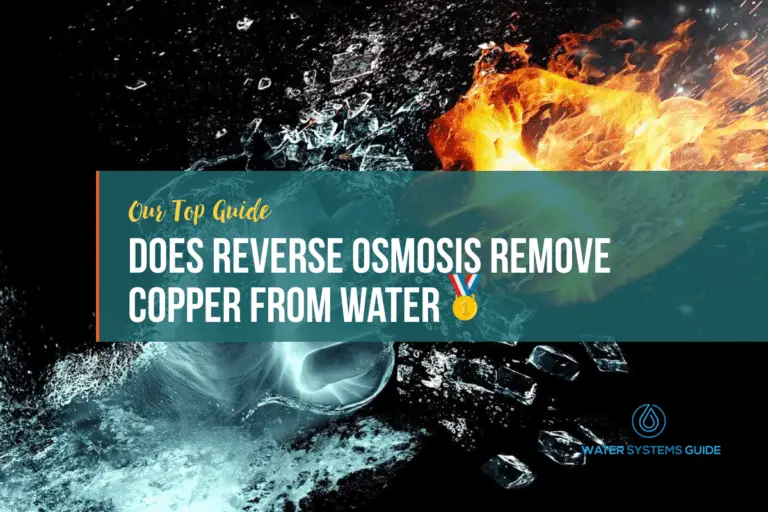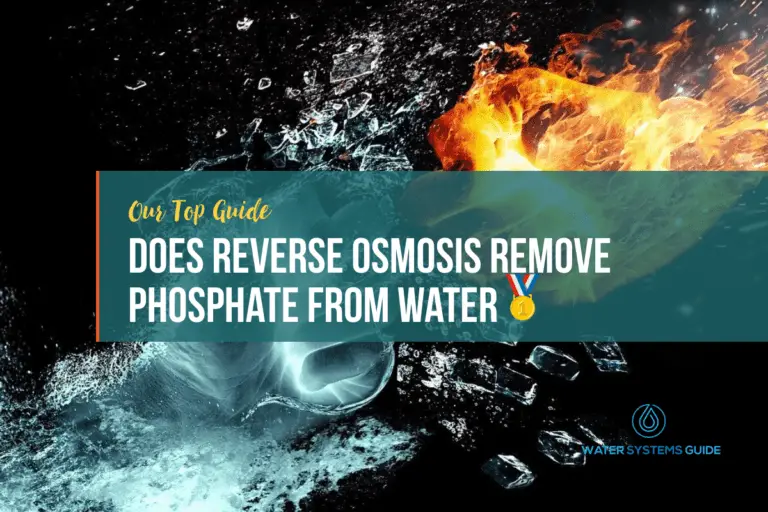Does Reverse Osmosis Remove Chloramine From Drinking Water
How Does Reverse Osmosis Work?
What is Chloramine and where is it used?
Chloramine is a compound that is used as a disinfectant and as an additive in some water supplies.
It is made by adding ammonia to chlorine, and is used in place of chlorine in some cases because it is more stable and lasts longer in the water supply.
Chloramine is used in both public and private water supplies, and is regulated by the EPA.
How does chloramine get into our municipal water?
Chloramine is a compound that is used as a disinfectant in municipal water supplies. It is formed by combining chlorine and ammonia, and has been shown to be effective in killing bacteria and viruses. However, chloramine can also be toxic to humans and animals if ingested in high concentrations.
Therefore, it is important to ensure that your municipal water supply is regularly tested for chloramine levels, and that you only consume water that has been treated to remove chloramine.
Chloramine’s Effect on Human Health
Exposure to chloramine can cause skin irritation, eye irritation, and respiratory problems. It can also lead to gastrointestinal problems, such as nausea and vomiting.
In high concentrations, chloramine can be toxic and even fatal. Therefore, it is important to be aware of the potential risks of exposure to this chemical and take steps to avoid it.
Having said that, we understand why you’d want to remove it from the water you drink or consume.
Does Reverse Osmosis Remove Chloramine?
Reverse osmosis does not remove chloramine from water (at least not technically on its own). Don’t worry we’ve described some other solutions further down in this article.
Reverse osmosis works by passing water through a semi-permeable membrane, which only allows water molecules to pass through and not larger molecules such as chloramine.
This means that chloramine will still be present in the water after it has been treated with reverse osmosis.
However, as described here, a RO system is normally equipped with two or more high-quality carbon filters. These pre-filters process the water before the membrane, at a slow rate of flow, and therefore may remove minor amounts of chloramine.
As we talk about further below, one of the most effective means to remove chloramine, is to use a RO system that has advanced catalytic pre-filtration.
This will obviously be dependent on a number of factors, such as the filter quality, flow rate, manufacturer’s claims, etc.
Therefore, it’s advisable to speak to the manufacturer of a RO system (which claims to remove Chloramine) to get specific information in regard to your usage and your concerns.
So as to make sure that your entire home is protected, it’s always advisable to use a point-of-entry (POE) RO system such as a whole house reverse osmosis system, instead of a point-of-use (POU) system, like an under-sink RO unit.
What Else Does Reverse Osmosis Remove?
Reverse osmosis also removes other contaminants from water, including fluoride, chloride, calcium, arsenic, chloramine, heavy metals, pesticides, and pharmaceuticals.
Unfortunately, RO does remove healthy minerals in the water, such as magnesium, sodium, potassium, and calcium
While most municipal water supplies in the United States are required to meet strict safety standards set by the Environmental Protection Agency (EPA), trace amounts of these and other contaminants can still end up in tap water. That’s why many people use reverse osmosis systems to further purify their drinking water.
How Else Can I Remove Chloramine from My Water Supply?
As referenced from David Bauman, a water systems specialist:
“Chloramines should not be confused with chlorine. Chloramines cannot be removed by passing water through the same activated carbon filters used for chlorine removal because these filters are too small at their designed flow rates.
The following are four types of water treatment technologies that can be used to remove chloramines at the point of use:
- Catalytic Carbon. This has a surface structure that has been altered from standard activated carbon, enabling it to remove chloramines, providing close attention is given to contact time, mesh size of the carbon and influent temperature. Theoretically, the carbon decomposes chloramine into traces of nitrogen gas, ammonia gas and chloride. If these reactions are not allowed to be completed, surface oxygen groups form that can foul or exhaust the carbon.
- With a 2-mg/L chloramine influent level, enhanced catalytic carbon can produce product water that maintains a <0.1-mg/L residual (required for dialysis). Manufacturer’s data on this type of carbon refer to flow rates ranging from 30 seconds to two minutes of empty bed contact time (EBCT). This converts to between about 3.5 gallons per minute per cubic feet (gpm/ft3) and 15 gpm/ft3.
- This does not mean that 15 gpm/ft3 is acceptable. For example, although the product water may be acceptable at this rate, the pressure loss may be prohibitive and the length of run before chloramine breakthrough may be reduced from 88,000 gallons to 11,000 gallons. Designers of dialysis water treatment systems use 10 minutes of EBCT. This contact time was established prior to the development of catalytic carbon, but because of the specifications required by the US Food and Drug Administration, which regulates dialysis water treatment equipment as medical devices, in most cases this has not changed. According to catalytic carbon data, this time could be reduced to about three minutes.
- Decreasing the mesh size of the carbon can more than double the gallon throughput, although it may also create more pressure loss. An increase in temperature from about 58 degrees F to 72 F also can more than double the gallon throughput.
- The word catalytic normally means enabling a reaction without entering into the reaction. This would imply that the catalyst would never change or become depleted. In reality this is probably not true; other adsorbable and ionic species in the water adsorb onto the carbon and eventually mask the catalytic sites. The more catalytic sites there are on the carbon, the longer its useful life.
- In addition, friction physically depletes the material; other foulants, such as iron, can foul it; and high pressure differential can crush it.
- Standard Activated Carbon. Used for chloramine removal long before catalytic carbon became available, standard activated carbon requires a very long contact time, which means a large volume of carbon is needed.
- Everything attributed to catalytic carbon applies to standard carbon, although to a lesser degree. All activated carbon has some catalytic capability, but standard carbons of all common basic materials have a relatively low activity for chloramine removal. For thorough removal, up to four times the contact time of catalytic carbon may be required. Substantial increases in percent removal and length of run before chloramine breakthrough can be achieved with smaller mesh carbon. Some systems have been designed that precondition the carbon by exposure to general use or to chlorine.
- Carbon cartridge filters have been tested for chloramine removal, but since no national testing standard has been established, no claims are being made. Some cartridges have a real advantage: Fine or powdered carbons, such as those used in cartridges, are excellent chloramine removal media in spite of not being made from catalytic material.
- They can render the discussions regarding catalytic vs. standard carbon moot.
- Ascorbic Acid. Used for dialysis before the development of catalytic carbon, this acid acted – as would other reducing agents – by reducing monochloramine to chloride and ammonia. However, this acid is not advised for drinking water applications and is no longer used for dialysis treatment.”
Conclusion
In conclusion, does reverse osmosis remove chloramine? No, it doesn’t by itself.
However, according to the reputable sources we’ve cited above, there are additional filters such as the Catalytic Carbon pre-filtration which can further enable a RO system to remove chloramine. There are a lot of units on the market which have this built-in.







